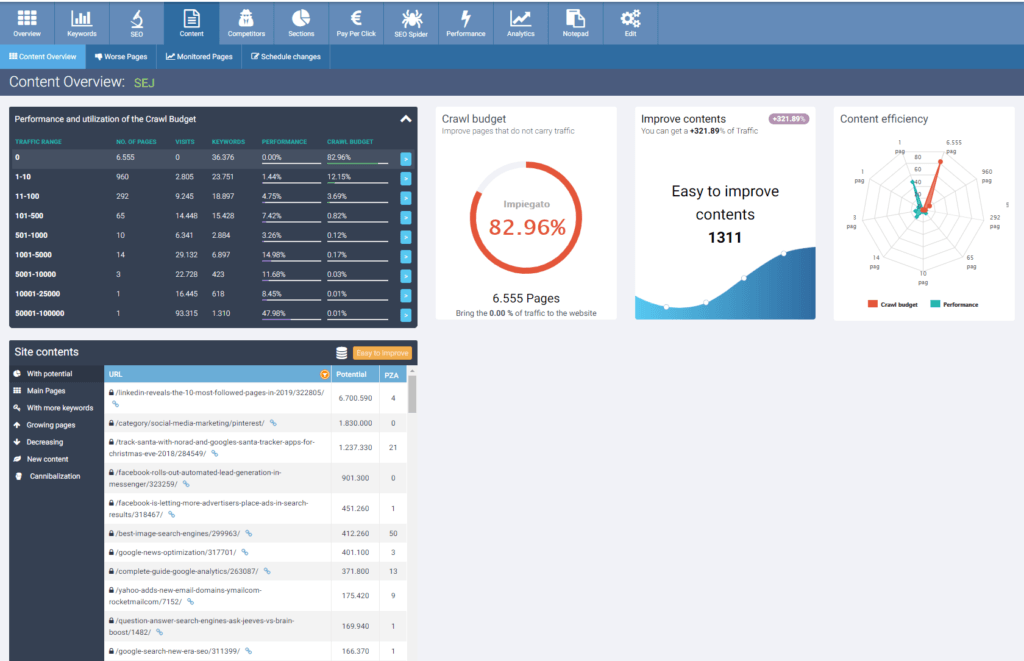Looking for a digital marketing suite with robust tools that can help you manage every aspect of your online strategy?
Then look no further than SEOZoom.
Italy’s premier digital marketing software, SEOZoom, launched in 2015, and since then, more than 25,000 Italian businesses have used SEOZoom. Now, they’ve expanded their software to provide data for websites in the United Kingdom.
(The software will expand even further, covering United States domains by the end of the year!)
SEOZoom has a wide variety of tools that assist digital marketers, site owners, analysts, and business leaders.
Whether you’re managing SEO, conducting competitor research, creating a content strategy, or writing copy, SEOZoom can help.
With a database of more than 1.3 billion keywords, 64 million domains and 3 billion URLs, SEOZoom can help you conduct all kinds of research.
Here, I’ll share nine ways you can use the tool and take your digital marketing efforts to the next level!
1. Monitor How You’re Spending Your Google Crawl Budget
You can use SEOZoom’s content overview to find out exactly how you’re spending your Google crawl budget.
You can add any site as an SEO project within the tool, and SEOZoom will tell you what content is performing well and what pages have no keywords aren’t ranking and have no visits.
It’s key to monitor not only which pages are performing well, but which pages are performing poorly because those pages are actually wasting your crawl budget.
Additionally, the content overview will take this data and make recommendations for easy improvements to your pages, content and overall site efficiency.
2. Monitor Your Site’s Health & Overall Performance with the SEO Spider
With the SEO Spider, you can keep a close watch on your site’s overall performance.
Monitor technical performance and quickly identify any issues that come up.
Among other things, you can optimize your crawl budget, check which pages are indexed detect technical issues, find broken links, etc.
A spidering tool like this is a must-have in any SEO tool suite, and SEOZoom delivers.
3. Research Keywords & Discover New Opportunities to Rank
With the keyword analysis tool, users can input a keyword, domain or URL.
Let’s see what happens when we search for the keyword “SEO.”
Immediately, a list of the top 100 sites populates – the user can then select one or more sites and examine the ranking trends for those sites.
Here, we’ve selected searchenginejournal.com and several of its competitors to see how they’re faring in the SERP.
It quickly becomes clear that top sites, including SEJ, have enjoyed steady traffic related to “SEO” over the last quarter, but neilpatel.com (light green) dipped last month in traffic in the European market.
With Website Trends, you can easily identify any industry trends, especially related to seasonality – this will help you better prepare for spikes and declines in sales, and also alert you to wins or losses among your competitors.
4. Spy on the Competition & Find out How Your Site Stacks up Against Others in Your Niche
You can also pit up to three competitors against each other to get more insight into their overall traffic and keyword distribution.
This data goes back up to two years, and you can analyze by domain vs. domain or by URL vs. URL.
Within the competitive reports, you’ll also find a keyword list tool.
You can add up to 100 keywords and SEOZoom will pull in data for the top 10 websites related to those keywords.
We added digital marketing-related keywords, and here’s what we got back:

